Beef pochero is one of the varieties of pochero. The original pochero recipe use pork as the main ingredient and it is one of the well known Filipino dishes. Although beef pochero also use the rest of the ingredients as the original pochero: cabbage, pechay, baguio beans, sweet potatoes or potatoes, tomato sauce and spices, there are also variation of how the saba bananas or plantain bananas are prepared. Some recipes fry the bananas first before adding in the dish but some just throw in the raw bananas in the pot while cooking. If you don’t eat pork, then this beef pochero is the best alternative of pork pochero.
A Hearty Filipino Comfort Food
When it comes to Filipino comfort food, few dishes are as beloved as pochero. Originating from Spanish colonial times, pochero is a savory stew traditionally made with pork, but today, variations using beef have become equally popular. This dish is perfect for those who prefer the rich, robust flavors of beef, making it a versatile option for family gatherings or simple weeknight dinners.
A Delicious Twist on a Classic
The heart of this recipe lies in the tender cuts of beef that are simmered to perfection. This slow cooking method ensures that the meat absorbs the medley of flavors from the vegetables and spices, creating a dish that’s both satisfying and nutritious. Though pork is the original star of pochero, using beef provides a deeper flavor profile, adding a rich, meaty taste that pairs beautifully with the sweetness of saba bananas and sweet potatoes.
The Origins of Pochero
Pochero, also known as “puchero,” traces its roots back to Spanish cuisine, where it was initially a humble stew made from leftover meats and vegetables. The dish evolved over time, adapting to the ingredients available in the Philippines. The use of saba bananas and sweet potatoes is a distinctly Filipino twist, introducing a delightful sweetness that balances the savory notes of the stew. This harmonious blend of flavors is what makes pochero a staple in Filipino households.
Choosing the Right Ingredients
One of the secrets to a great pochero lies in the quality of ingredients. Fresh vegetables like cabbage, pechay, and baguio beans add a wonderful crunch and color to the dish. The sweetness of the saba bananas, often fried for an extra layer of flavor, complements the savory broth, creating a unique taste experience. Some cooks prefer to add the bananas raw, allowing them to soften and meld into the stew, while others swear by frying them first to enhance their natural sweetness. No matter your preference, the bananas play a crucial role in balancing the dish’s flavors.
Cooking the Stew
Preparing this savory stew is a labor of love, but the process is straightforward and rewarding. Begin by boiling the beef in a pot of seasoned water until it becomes tender. This step can be expedited using a pressure cooker, which is especially useful on busy days. Once the beef is tender, it is sautéed with garlic and onion in a deep pan, adding layers of flavor. Incorporating a portion of the beef broth back into the pan infuses the dish with a rich, hearty base.
Next, sweet potatoes and saba bananas are added to the pot, simmering gently to absorb the flavors of the broth. The sweet potatoes, with their natural sugars, melt into the stew, adding a subtle sweetness that complements the robust beef. The addition of tomato sauce introduces a tangy undertone, brightening the overall flavor of the stew.
As the dish continues to cook, baguio beans are tossed in, followed by cabbage and pechay, which are added last to preserve their crisp texture. Each vegetable is cooked just enough to retain its distinct flavor and texture, ensuring every bite is a perfect balance of tender meat and vibrant vegetables.
A Dish for All Occasions
This hearty stew is more than just a meal; it’s a celebration of the rich culinary heritage of the Philippines. The combination of tender beef, sweet bananas, and fresh vegetables creates a dish that’s both comforting and satisfying. Whether served for a special occasion or as a comforting weeknight meal, this stew is sure to bring warmth and joy to the table.
Tips for the Perfect Stew
Achieving the perfect balance of flavors is key to making this dish a success. Here are a few tips to elevate your pochero to the next level:
- Use a mix of both saba and sweet potatoes for added depth of flavor. The sweetness of the bananas contrasts beautifully with the savory broth.
- Don’t rush the cooking process. Allow the beef to simmer slowly until it’s tender and full of flavor.
- Season the stew gradually, tasting as you go, to ensure the flavors meld perfectly together.
- Consider frying the saba bananas before adding them to the stew. This step caramelizes the sugars in the bananas, adding a delightful sweetness that enhances the overall dish.
Serving Suggestions
This savory dish is best enjoyed hot, with a side of steamed rice to soak up the flavorful broth. A dash of fish sauce or a squeeze of calamansi juice can add an extra layer of flavor to the dish, making it even more irresistible. For an authentic Filipino experience, pair it with a simple salad of tomatoes and onions, or serve it alongside other traditional Filipino dishes for a complete meal.
This beef stew offers a delicious twist on a Filipino classic, perfect for those who appreciate the deep, rich flavors of beef. Whether you’re new to Filipino cuisine or a seasoned home cook, this dish is a must-try. It’s a testament to the adaptability of Filipino cooking, where simple ingredients come together to create something truly special. Enjoy this flavorful stew with your loved ones, and experience the heartwarming comfort that only a traditional Filipino dish can bring.
How To Cook Beef Pochero
Ingredients
- 1 kilo beef briskets or beef shoulder slice into bite size pieces
- 1 small pack tomato sauce about 1/2 cup
- 1/2 small cabbage quartered
- 1 bunch pechay
- 100 grams baguio beans
- 5 pcs bananas saba variety, sliced into 2 pcs each
- 2 pcs medium size sweet potato kamote or potatoes, quartered
- 1 medium onion chopped
- 1/2 head garlic crushed
- salt and pepper to taste
- sugar to taste
Instructions
How To Cook Beef Pochero:
- Boil the beef in a pot with water, salt and pepper until tender.
- You can use a pressure cooker to speed up the cooking time.
- In a deep pan, heat oil and saute garlic and onion.
- Put the boiled beef and include about 1 to 1 & 1/2 cups of the broth.
- Then add the bananas and sweet potatoes, cover and simmer at least 5 minutes.
- Then add the tomato sauce and cover again an simmer or a few minutes.
- Add the baguio beans and let it cook for a while then follow the cabbage and pechay.
- Season with salt, pepper and sugar according to your preferred taste.
- Serve hot.
Notes
Cooking Tips:
Choose the Right Cut of Beef
Selecting the right cut of beef is crucial for achieving tender and flavorful results. Opt for cuts like chuck or shank, which have enough fat and connective tissue to break down during cooking, making the meat tender and juicy. Avoid lean cuts as they can turn out tough and dry in this slow-cooked dish.Simmer Slowly for Maximum Flavor
Take your time when simmering the stew to allow the flavors to fully develop. Slow cooking over low heat helps the beef become tender and ensures that the vegetables absorb the savory broth. Patience is key, as rushing the process may result in tougher meat and less flavorful vegetables.Fry the Saba Bananas for Extra Sweetness
For an added layer of flavor, try frying the saba bananas before adding them to the stew. This technique caramelizes the sugars in the bananas, enhancing their natural sweetness and adding a delightful contrast to the savory broth. It’s a simple step that can elevate the overall taste of your pochero.
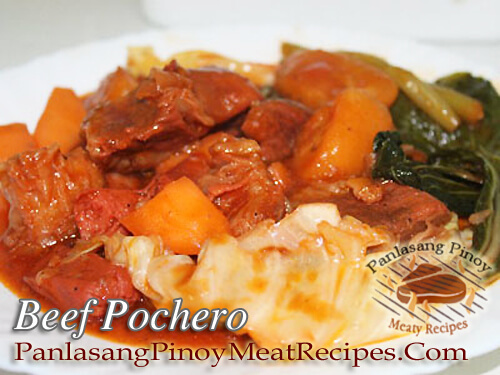

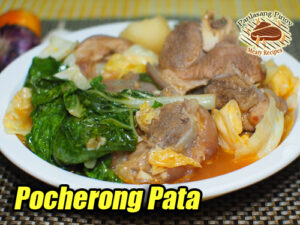
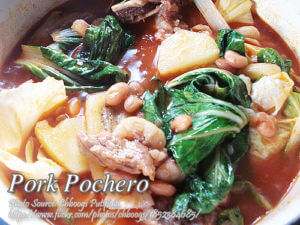
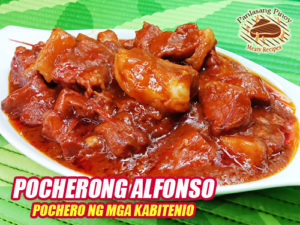
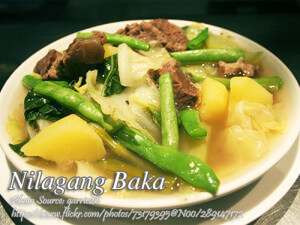
I absolutely admire this dish. Because I’m a Filipino Muslim and loves to cook different dishes but no pork. I love to try this pochero beef recipe. It’s so delightful. Thanks Manny
Hi Marihya, you are very welcome and thanks for visiting this blog. I hope you like this version of pochero.
I love Beef Pochero. My version was bit soupy as I prepared it through imagination. I searched for its authentic Pinoy recipe, and I found yours. I live in Australia, and I just bought frozen Saba because I’m craving for Pochero. I’ll try your recipe. Looks delicious!
Hi Lea, good luck on your cooking and I hope that you will like the taste of this version of pochero!
You are welcome. Thanks for dropping by.
Glad I found this beef pochero recipe. I’m abstaining from pork this week so this is a good alternative to pork pochero. Thanks!